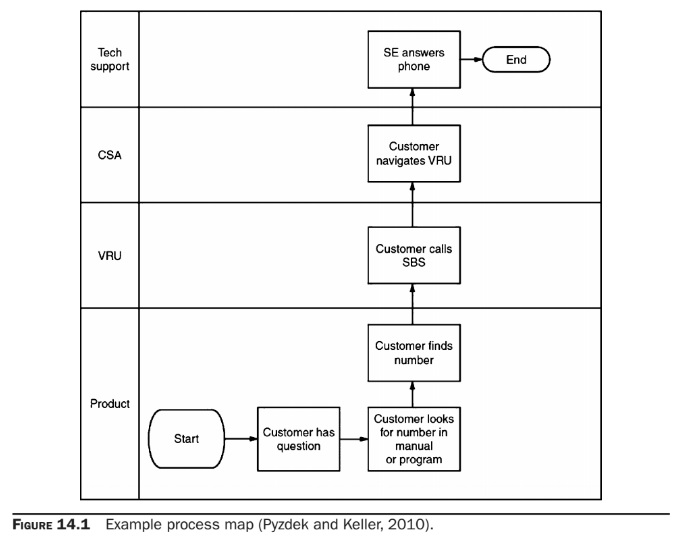Tools
7MP Management and Planning Tools
8QC Traditional Quality Control Tools
Failure Mode, Effects, and Criticality Analysis
Maintainability and Availability
Process Decision Program Charts
Flowcharts and Process Maps
An excerpt on Six Sigma flow charts from The Handbook for Quality Management (2013, McGraw-Hill) by Paul Keller and Thomas Pyzdek
A process flowchart is simply a tool that graphically shows the inputs, actions, and outputs of a given system. These terms are defined as follows:
Inputs: the factors of production: land, materials, labor, equipment, and management.
Actions: the way in which the inputs are combined and manipulated in order to add value. Actions include procedures, handling, storage, transportation, and processing.
Outputs: the products or services created by acting on the inputs. Outputs are delivered to the customer or other user. Outputs also include unplanned and undesirable results, such as scrap, rework, pollution, etc. Flowcharts should contain these outputs as well.
Flowcharting is such a useful activity that the symbols have been standardized by various ANSI standards. There are special symbols for special processes, such as electronics or information systems. However, in most cases activities are contained within simple rectangles; decision points within diamonds, with one input and only two potential outputs (a yes/no path).
Flowcharts can be made either more complex or less complex. As a rule of thumb, to paraphrase Albert Einstein, Flowcharts should be as simple as possible, but not simpler. The purpose of the flowchart is to help people understand the process and this is not accomplished with flowcharts that are either too simple or too complex.
When flowcharts indicate a large number of decision point, it is often a sign of an overly complicated process that has potential for error. Fortunately, the decision points are also a potential focus for improvement.
Process maps are flowcharts that also show, via swim lanes, how the process moves between functional areas, as shown in Figure 14.1.

Learn more about the Quality Improvement principles and tools for process excellence in Six Sigma Demystified (2011, McGraw-Hill) by Paul Keller, or his online Green Belt certification course ($499).





